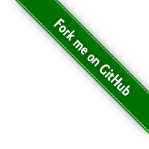#800 IR Photodiodes
Investigating and testing infrared (IR) transmission between IR LEDs and IR photodiodes. Tested with CHANZON-brand IR Emitter and Receivers (with a note about PT334-6C part confusion).

Notes
Infrared transmitters (LEDs) and receivers (photodiodes) are widely available in 3mm and 5mm through-hole tuned for 850nm or 940nm for example from this aliexpress seller.
See also The Art of Electronics 12.6.1 Photodiodes and phototransistors (3rd Edition).
Components
The aliexpress seller provided the following specification for their IR transmitters and receivers:
- Brand: CHANZON
- Lens Size: 3mm / 5mm / 10mm Diameter
- Lens: Clear Lens (transmitter) / Black Lens (receiver)
- Emitting Color: IR Emitter 850nm/IR Emitter 940nm / IR Receiver 940nm
- Luminous Intensity: Invisible Light
- Emitting Angle:
- 60 Degree (850NM IR Emitter)
- 45 Degree (940NM IR Emitter)
- 30 Degree (940NM IR Receiver)
- Forward Voltage:
- 1.4-1.6V (850NM IR Emitter)
- 1.2-1.5V (940NM IR Emitter)
- Current: 20mA
- Polarity: Anode (Longer Part); Cathode (Shorter Part)

Note concerning “PT334-6C” Parts
Several vendors (Everlight being the best-known) sell the PT334-6C as a clear-lens NPN phototransistor. For example, see the PT334-6C datasheet (digikey).
However there is also some confusion caused by a number of suppliers (especially on AliExpress/eBay/LCSC 3rd-party listings) selling a device called PT334-6C, but it is actually an IR LED, not a phototransistor.
It is not really possible to visually distinguish the parts. Generally: unless the part comes with a datasheet clearly identifying it as a phototransistor, assume it is most likely an IR LED.
IR LEDs (Infrared Light-Emitting Diodes)
What they do:
- Emit light in the infrared spectrum (typically 850–950 nm).
- Similar to visible LEDs but optimized for IR output.
- Can be clear or tinted; clear lenses allow more efficient IR emission.
Key points:
- Forward-biased → emits IR photons
- Narrow spectral range, often centered near ~940 nm
- Very fast switching (tens of MHz for good emitters)
- Used as transmitters in sensing or communication systems
IR Photodiodes
What they do:
- Detect IR light and convert it into an electrical signal.
- Photodiodes operate in photovoltaic (solar-cell-like) or photoconductive (reverse-biased, fast) mode.
- Phototransistors are more sensitive but slower (because of internal gain).
Key points:
- Reverse-biased → produces current proportional to incident IR light
- Spectral response typically matches IR LED wavelengths (850–950 nm)
- Clear packages maximize sensitivity
- Phototransistor variants provide higher gain at the cost of speed
Summary
| Feature | IR LED | IR Photodiode | IR Phototransistor |
|---|---|---|---|
| Function | Emit | Detect | Detect (amplified) |
| Biasing | Forward | Reverse | Reverse |
| Speed | Very fast | Very fast | Moderate |
| Sensitivity | N/A | Low–Medium | High |
| Use as detector? | Yes (weak) | Yes | Yes |
Typical applications
- remote controls
- IR data communication (IrDA, legacy systems)
- Proximity sensors
- Break-beam detectors
- IR interlocks
- Night-vision illumination (CCTV, security cameras)
- Optical encoders (quadrature disks, motor feedback)
- Line-following robots
- Gesture sensors
- Optical flame and smoke detectors
- Barcode scanners
Circuit Design
The test circuit is a simple setup between transmitter and receiver:
- a square wave generator drives an IR LED
- I am using LEAP#791 555 Breadboard Pulse Generator for this (not shown in the schematic)
- the voltage across the IR Photodiode is traced with an oscilloscope
Designed with Fritzing: see ir-photodiodes.fzz.


Testing on a breadboard:
- the clear component is the IR LED transmitter. It is used like other LEDs.
- the black component is the IR photodiode receiver. It is used “reverse-biased”.

Testing with 5mm Components

The following scope traces show test results at varying frequencies:
- CH1 (Yellow) - input square wave
- CH2 (Blue) - IR photodiode voltage response
At 100Hz, we see a perfect reproduction at the receiver:

At 1kHz, we see some slew appearing at the receiver:

At 20kHz, the received signal is significantly distorted:

Testing with 3mm Components

The following scope traces show test results at varying frequencies:
- CH1 (Yellow) - input square wave
- CH2 (Blue) - IR photodiode voltage response
At 100Hz, we see a perfect reproduction at the receiver:

At 1kHz, we see some slew appearing at the receiver:

At 20kHz, the received signal is significantly distorted:

Credits and References
- 100Pcs 3mm 5mm IR LED Diode Transmitter Receiver 850nm 940nm Infrared Photodiode Phototransistor Emitter Lights Emitting Bulb - aliexpress seller
- The Art of Electronics 12.6.1 Photodiodes and phototransistors (3rd Edition).
- https://en.wikipedia.org/wiki/Photodiode
- https://www.build-electronic-circuits.com/photodiode/
- https://www.electronics-tutorials.ws/diode/photodiode.html
